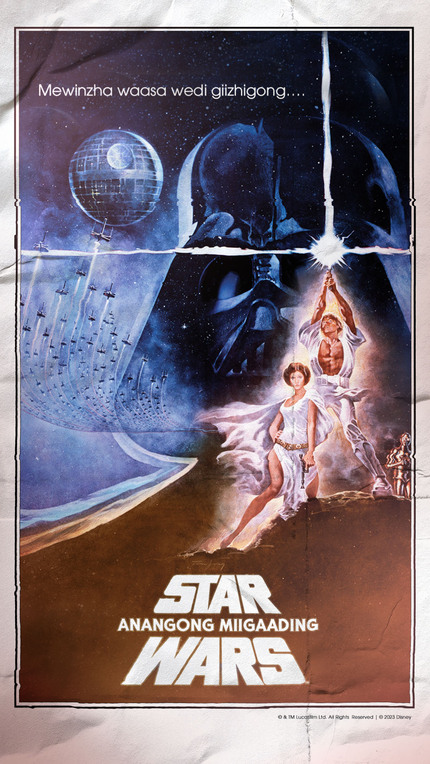
- Details
- By Kaili Berg
The adaptation of Star Wars into Anishinaabemowin is part of a growing movement to preserve and celebrate Indigenous languages by incorporating them into popular media.
Anishinaabemowin, or Ojibwe, is one of the most widely spoken Indigenous languages in North America, yet it is endangered due to declining numbers of fluent speakers. With fewer than 25,000 speakers across Canada and the U.S., language revitalization has become urgent for Anishinaabe communities.
The project was supported in part by the Government of Canada through the Indigenous Languages and Cultures Program from Canadian Heritage. Dougald Lamont helped launch the project in 2021 after proposing it to Lucasfilm executive Pablo Hidalgo as a language revitalization project in support of reconciliation.
Anangong Miigaading was created by director Ellyn Stern Epcar and producer Michael Kohn, who worked closely with a team of translators and voice actors to bring the project to life.
The translation of the script was led by Patricia Ningewance, an Ojibwe language expert, with support from Dennis Daminos Chartrand, Brian Cochrane, and Albert Owl. The team worked together to adapt the dialogue, making sure it aligned with the Anishinaabe people.
The recording process took place over 10 days, with the final audio mix completed at Skywalker Sound in California to ensure the production maintained the cinematic quality associated with the Star Wars film franchise.
The original Star Wars film has been translated into more than 50 languages over the years. The Ojibwe dub is the second time the blockbuster has been translated into an Indigenous language — a 2021 edition translated the film into Navajo.
More Stories Like This
From Dishwasher to Award-Winning Chef: Laguna Pueblo's Josh Aragon Serves Up Albuquerque's Best Green Chile StewRob Reiner's Final Work as Producer Appears to Address MMIP Crisis
Vision Maker Media Honors MacDonald Siblings With 2025 Frank Blythe Award
First Tribally Owned Gallery in Tulsa Debuts ‘Mvskokvlke: Road of Strength’
Zuni Youth Enrichment Project and Partners at Ho’n A:wan Productions Launch 8th Annual Delapna:we Project
Help us defend tribal sovereignty.
At Native News Online, our mission is rooted in telling the stories that strengthen sovereignty and uplift Indigenous voices — not just at year’s end, but every single day.
Because of your generosity last year, we were able to keep our reporters on the ground in tribal communities, at national gatherings and in the halls of Congress — covering the issues that matter most to Indian Country: sovereignty, culture, education, health and economic opportunity.
That support sustained us through a tough year in 2025. Now, as we look to the year ahead, we need your help right now to ensure warrior journalism remains strong — reporting that defends tribal sovereignty, amplifies Native truth, and holds power accountable.
 The stakes couldn't be higher. Your support keeps Native voices heard, Native stories told and Native sovereignty defended.
The stakes couldn't be higher. Your support keeps Native voices heard, Native stories told and Native sovereignty defended.
Stand with Warrior Journalism today.
Levi Rickert (Potawatomi), Editor & Publisher


